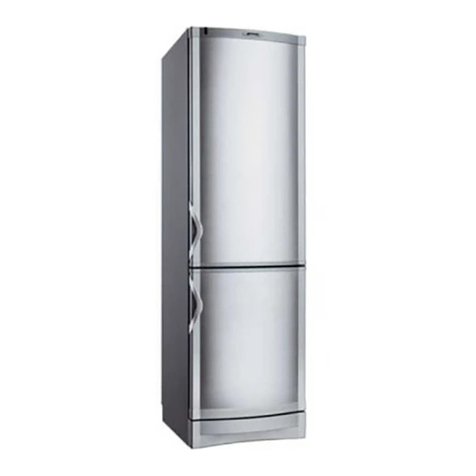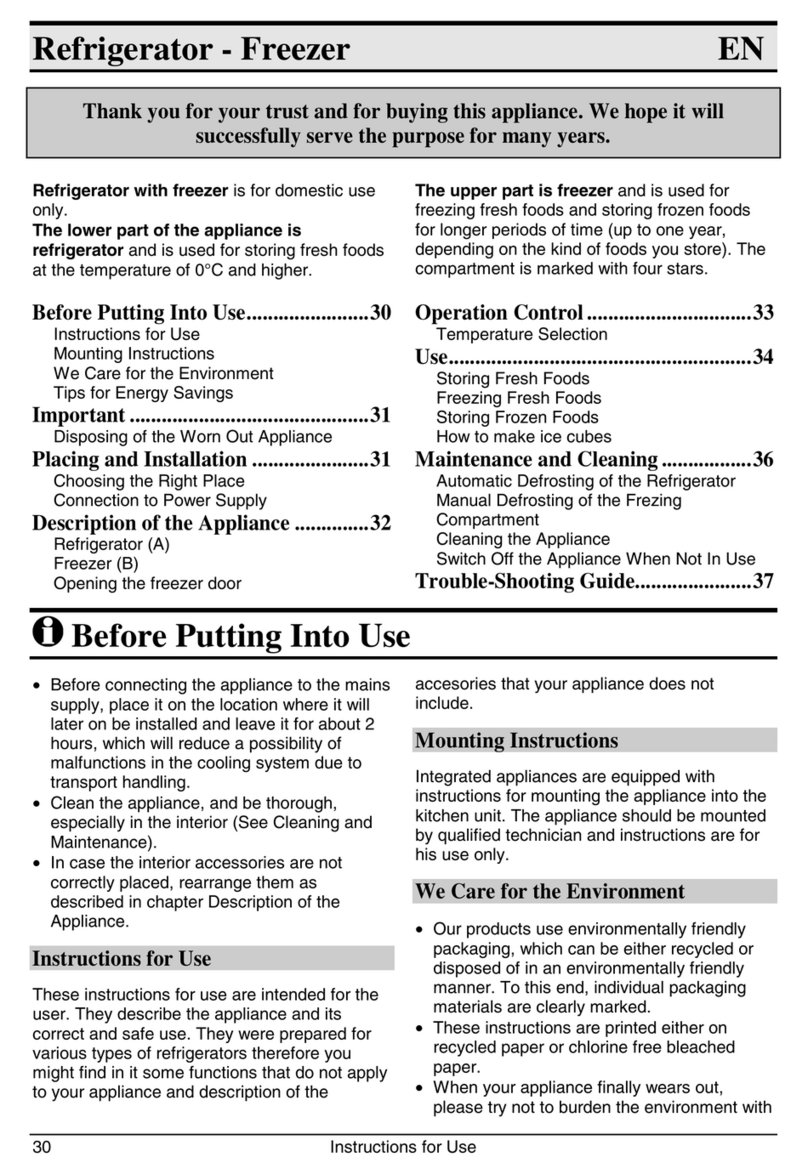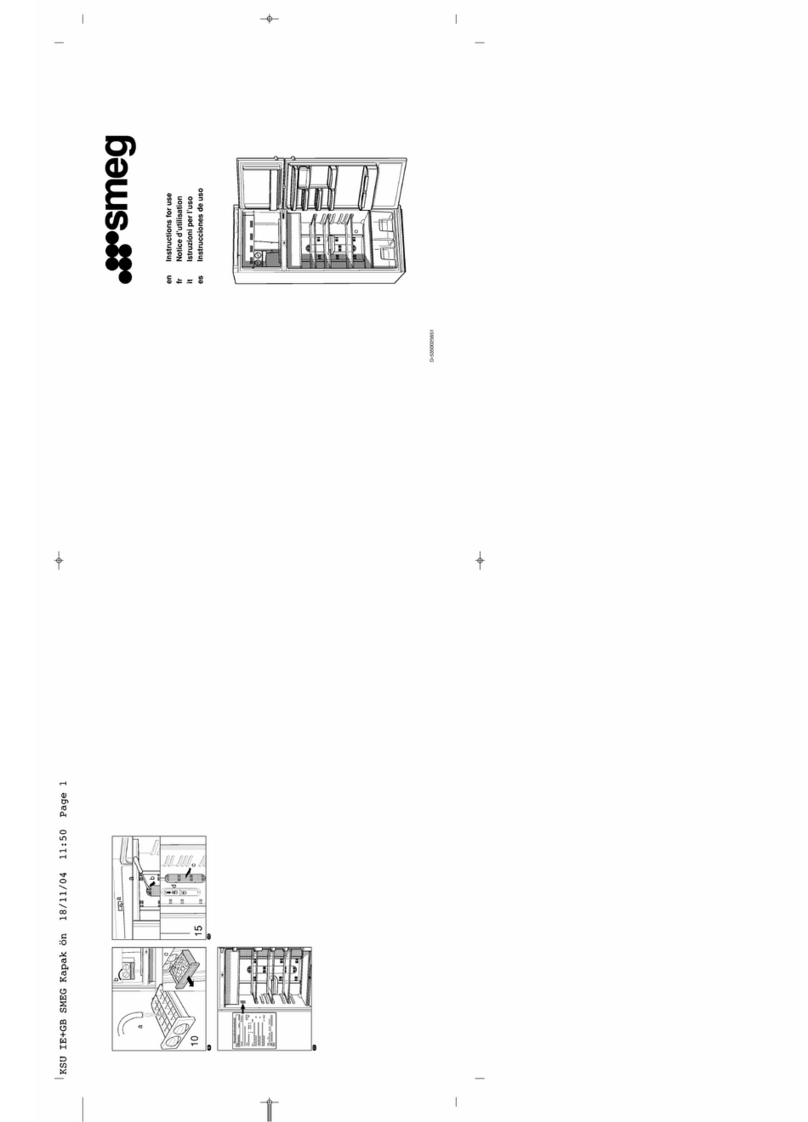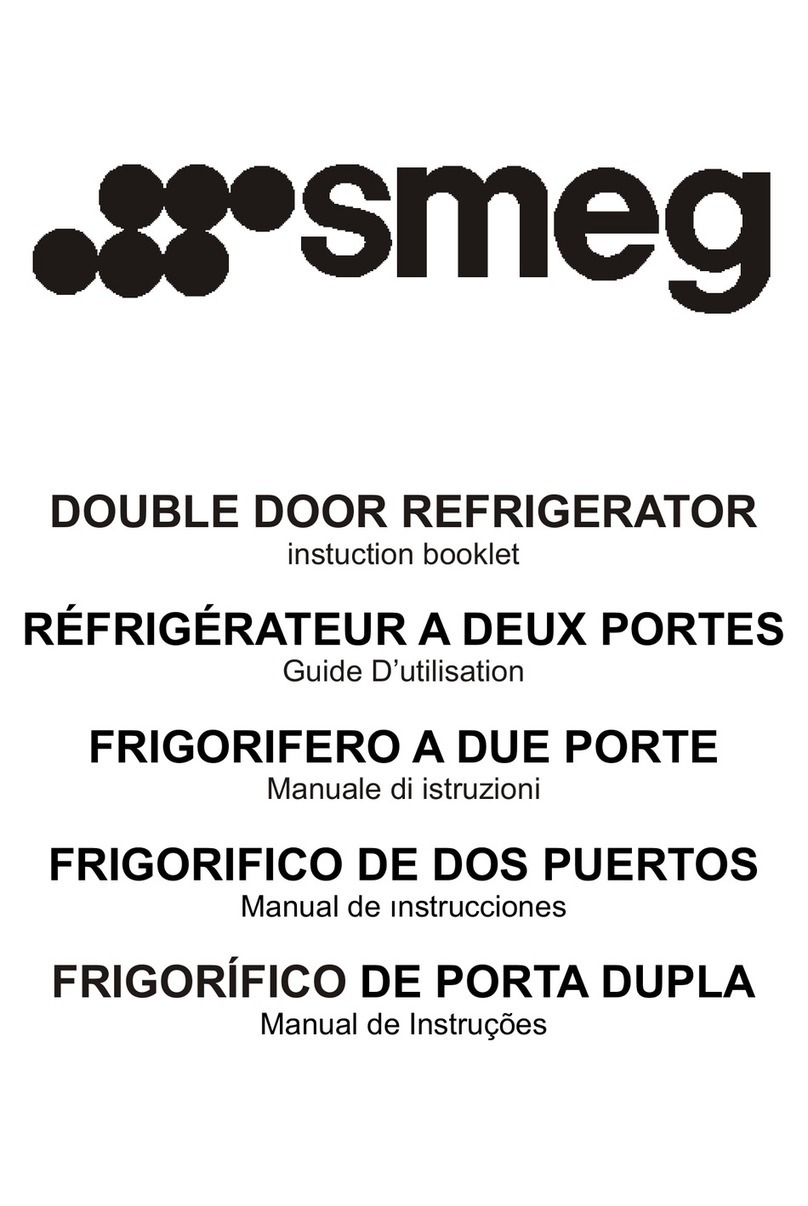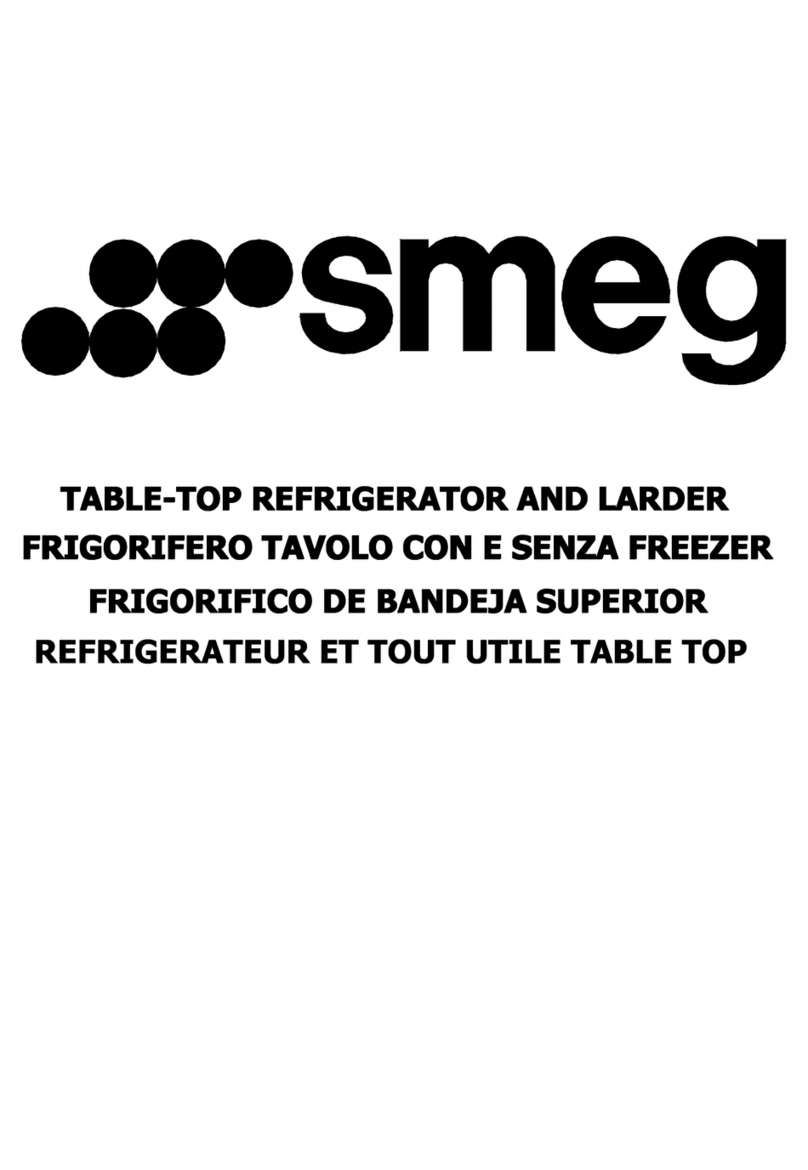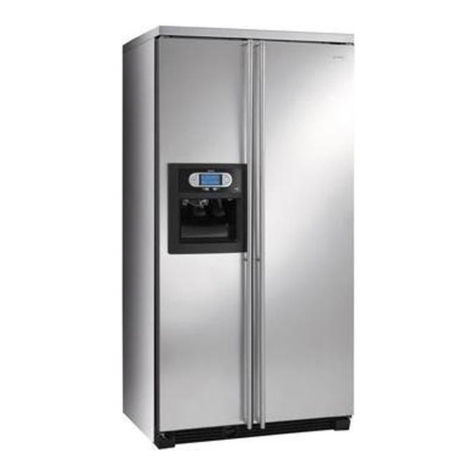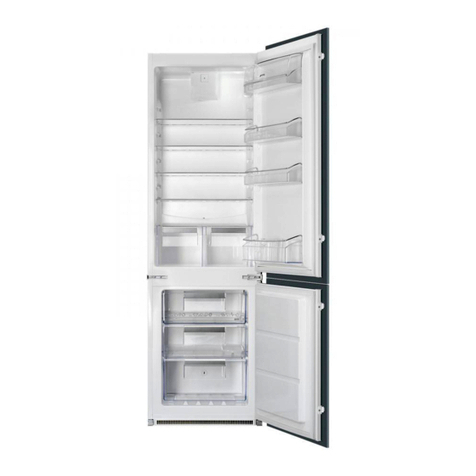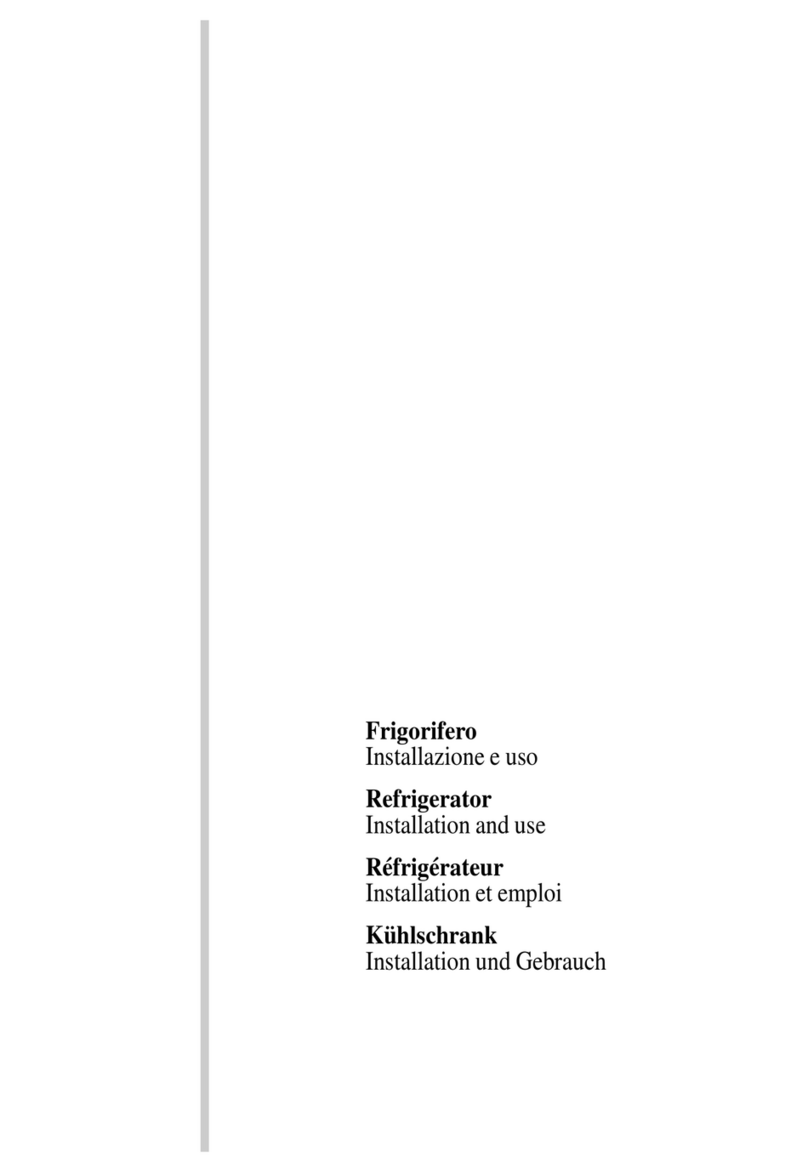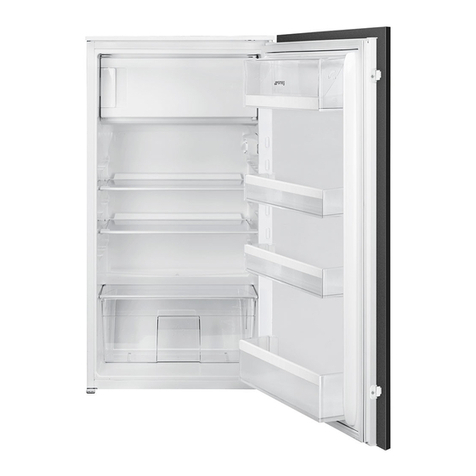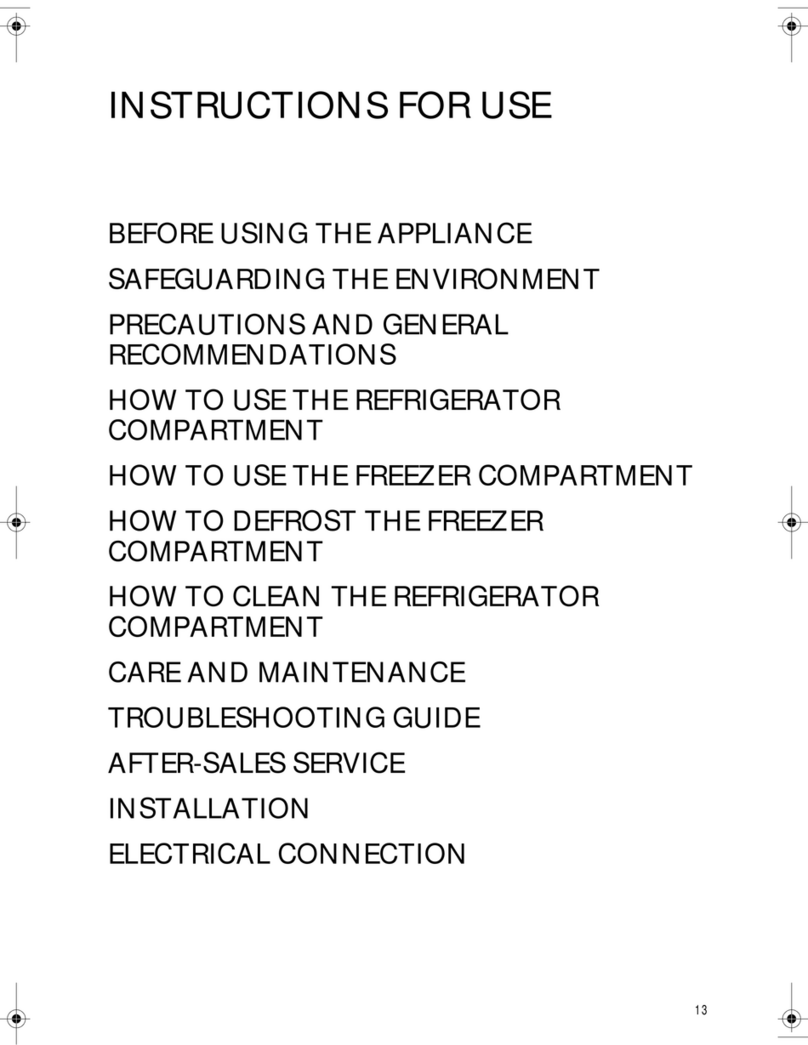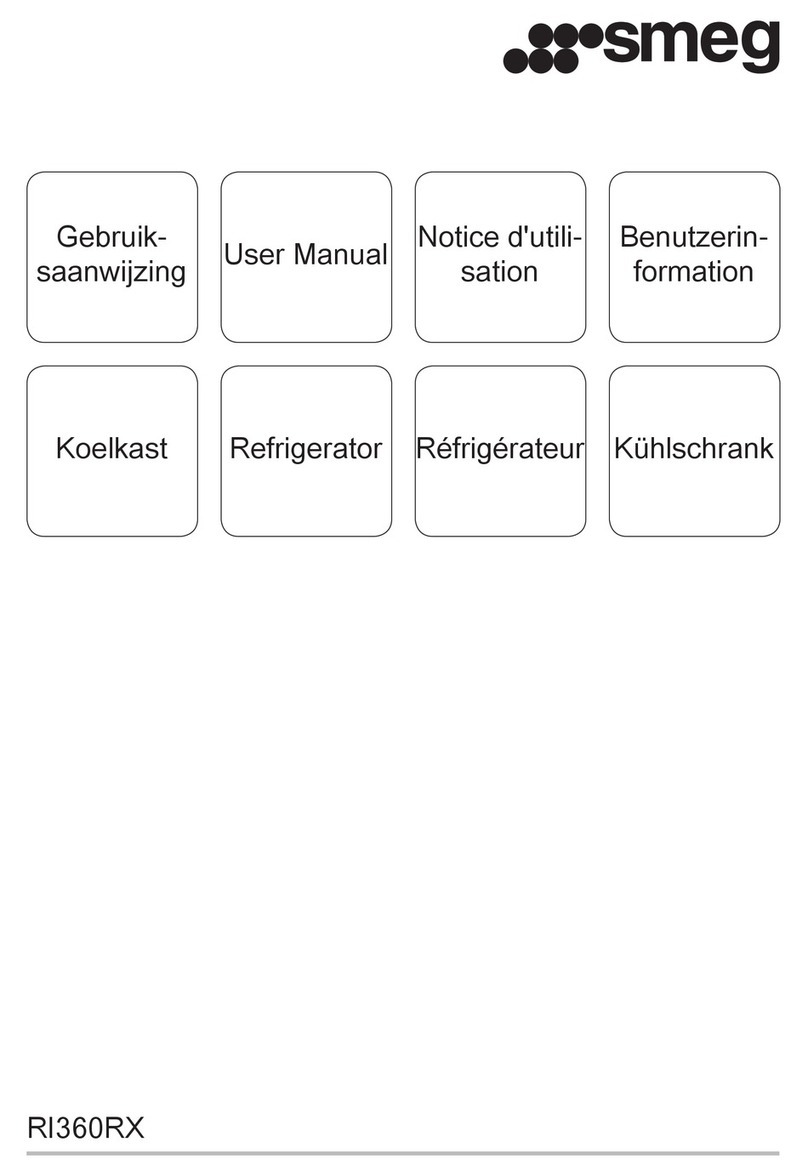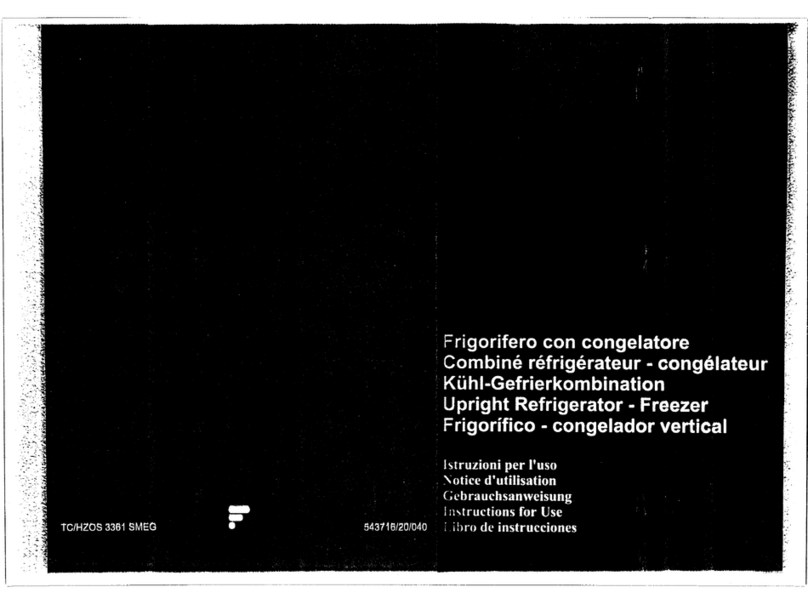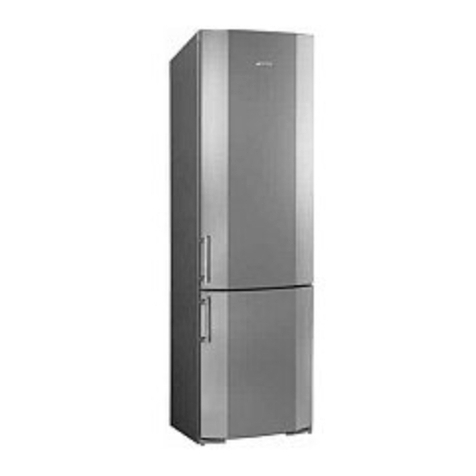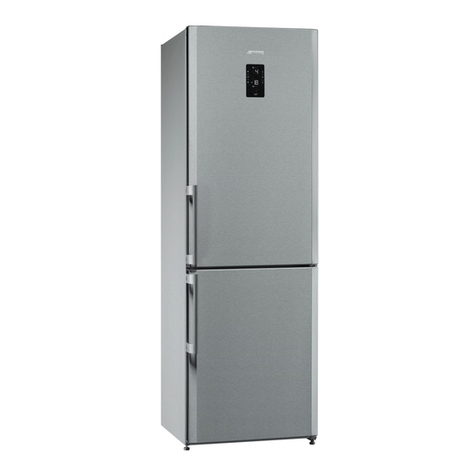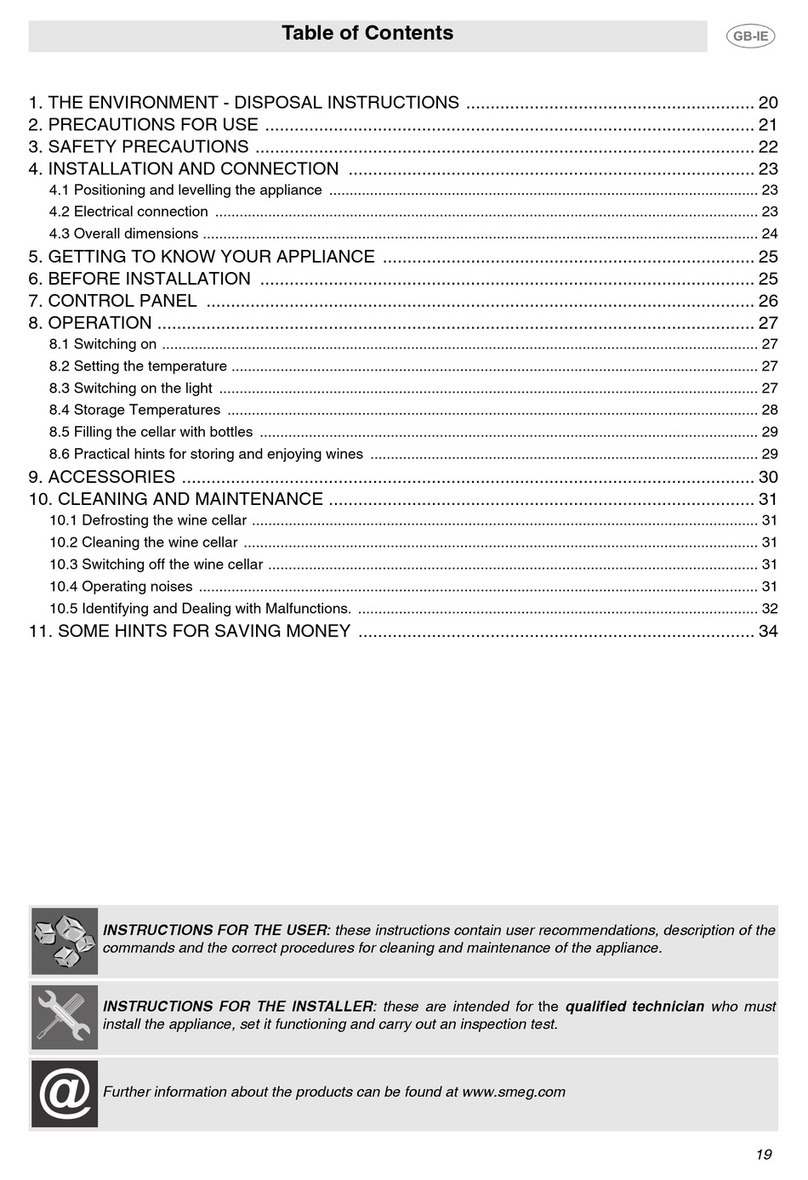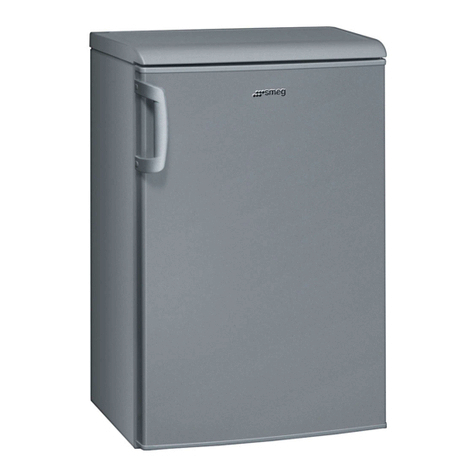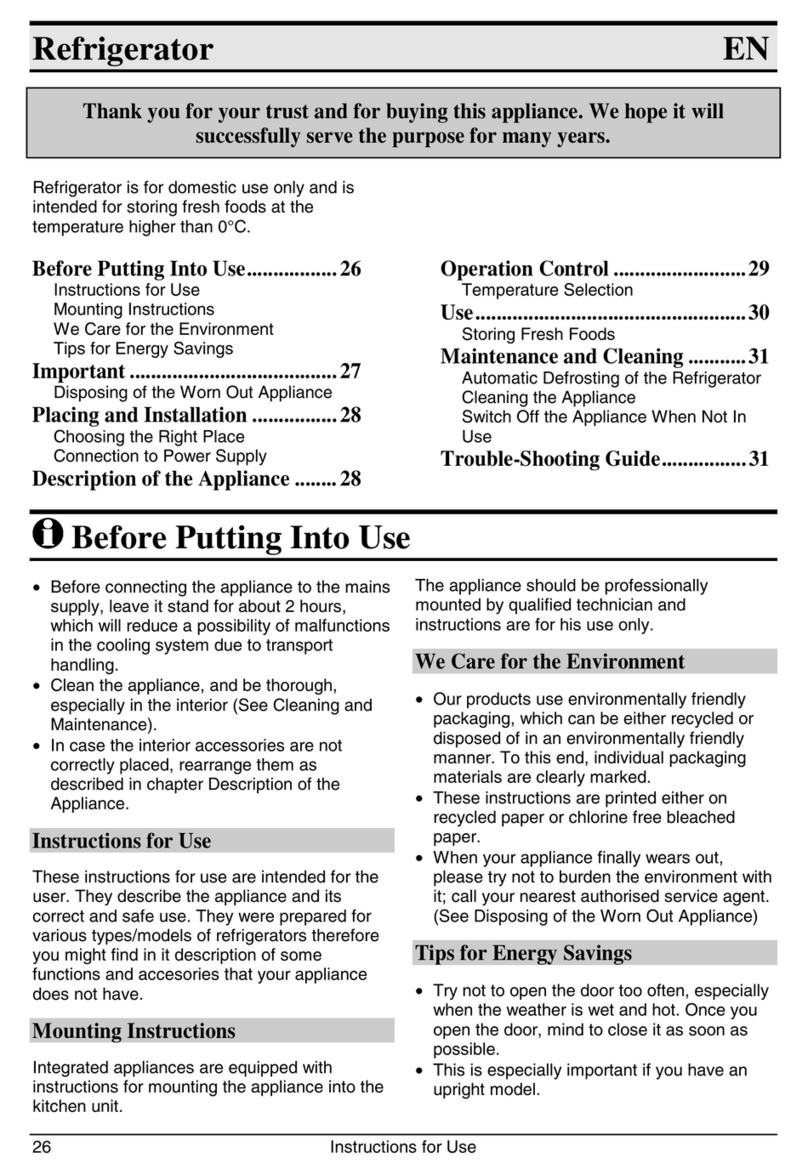Instructions for Use
12
• Use higher thermostat settings only when required or
recommended.
• Before loading the appliance with packages of fresh foods,
make sure they are cooled to ambient temperature.
• Ice and frost layer increase energy consumption, so do
clean the appliance as soon as the layer is 3-5 mm thick.
• If the gasket is damaged or if it turns out that the sealing is
poor, the energy consumption is substantially higher. To
restore efficiency, replace the gasket.
• Condenser at the bottom of the appliance must always be
clean and dust free (see Section Cleaning of the
Appliance).
• Always consider instructions stated in sections Positioning
and Energy Saving Tips, otherwise the energy consumption
is substantially higher.
Important
• If you have bought this appliance to replace an old one
equipped with a lock that cannot be opened from inside
(lock, bolt), make sure that the lock is broken. This will make
it impossible for children to lock themselves inside the
appliance and suffocate.
• The appliance must be correctly connected to the mains
supply. (see: Connecting to the Mains Supply).
• Do not touch the cooled surfaces while the appliance
operates, especially not with wet hands, because the skin
may stick to the cold surfaces.
• Do not freeze bottles containing liquid, especially not soft
drinks, such as mineral water, sparkling wine, beer, cola
etc., because liquid expands during freezing and the glass
bottle is very likely to blow up.
• Do not eat frozen food (bread, fruit, vegetables), because
you can get frostbites.
• If the food has strange smell or color, throw it away, because
it is very likely that it is spoiled and therefore dangerous to
eat.
• Disconnect the appliance from the power supply before
repairing it (only a qualified technician should repair it),
before cleaning and before replacing the light bulb.
• Do not defrost the appliance with other electric appliances
(as for example with hair dryer) and never scrape the frost
layer with sharp objects. Use only enclosed tools or tools
recommended by the manufacturer.
• For the sake of environment protection - be careful not to
damage the rear wall of the appliance (the condenser unit or
the tubes - for example when moving the appliance) or any
part of the refrigerating system inside the appliance.
• The refrigerating system of the appliance is filled with
refrigerant and oil, so when the appliance is damaged,
handle it with care and dispose it of in compliance with
environmental protecting precautions. (See We Care for the
Environment).
• In the supply cord is damaged, it must be replaced by the
manufacturer or his service agent or a qualified person in
order to avoid hazard.
• The rating plate is inside the appliance or outside on the rear
wall.
The symbol on the product or on its packaging
indicates that this product may not be treated as
household waste. Instead it shall be handed over
to the applicable collection point for the recycling
of electrical and electronic equipment. By ensuring this
product is disposed of correctly, you will help prevent
potential negative consequences for the environment
and human health, which could otherwise be caused by
inappropriate waste handling of thisproduct. For more
detailed information about recycling of this product,
please contact your local city office, your household
waste disposal service or the shop where you purchased
the product.
Disposing of the Worn Out Appliance
• When your appliance finally wears out, dispose it of. If the
appliance has a lock, break it, in order to prevent eventual
accidents (danger of children get locked inside the
appliance).
• The refrigerating system of the appliance is filled with
refrigerant and insulating substances which should be
separately treated and processed. Call your nearest
authorised service agent or specialised servicing centre. If
you don't find one, contact your local authorities or your
distributor. Be careful not to damage the tubes on the rear
wall of the appliance (danger of pollution).
• To avoid pollution of the environment make sure not to
damage the hose at the bottom of the appliance.
Placing and Installation
Choosing the Right Place
Place the appliance in dry and regularly ventilated room.
Allowed ambient temperature depends on the model (class) of
the appliance and is stated on the rating plate of the appliance.
Never place the appliance near heat emitting devices (e.g.
cooker, radiator, water heater or similar devices) and do not
expose it to direct sunlight.
The appliance should be positioned at least 3 cm away from
the electric or gas cooker and at least 30 cm away from the oil
or coal stove. If this is not possible, use an appropriate
insulation.
Class Ambient temparature
SN (sub-normal) from + 10°C to + 32°C
N (normal) from + 16°C to + 32°C
Connection to Power Supply
Connect the appliance with the cable and plug to the power
supply socket outlet with a ground terminal (safety socket).
Required nominal voltage and frequency are indicated on the
rating plate. The connection to the mains supply and earthing
have to be made according to current standards and
regulations. The appliance resists temporary voltage tolerance
up to -6 to +6 %.
Adjusting the height of the appliance
The appliance is equipped with four adjustable legs, so that the
height may be adjusted from 82 to 90 cm. The height must be
adjusted prior building the appliance into the opening slot, and
it should be set at such height that the top panel of the
appliance fits exactly below the kitchen worktop (see Mounting
Instructions).
